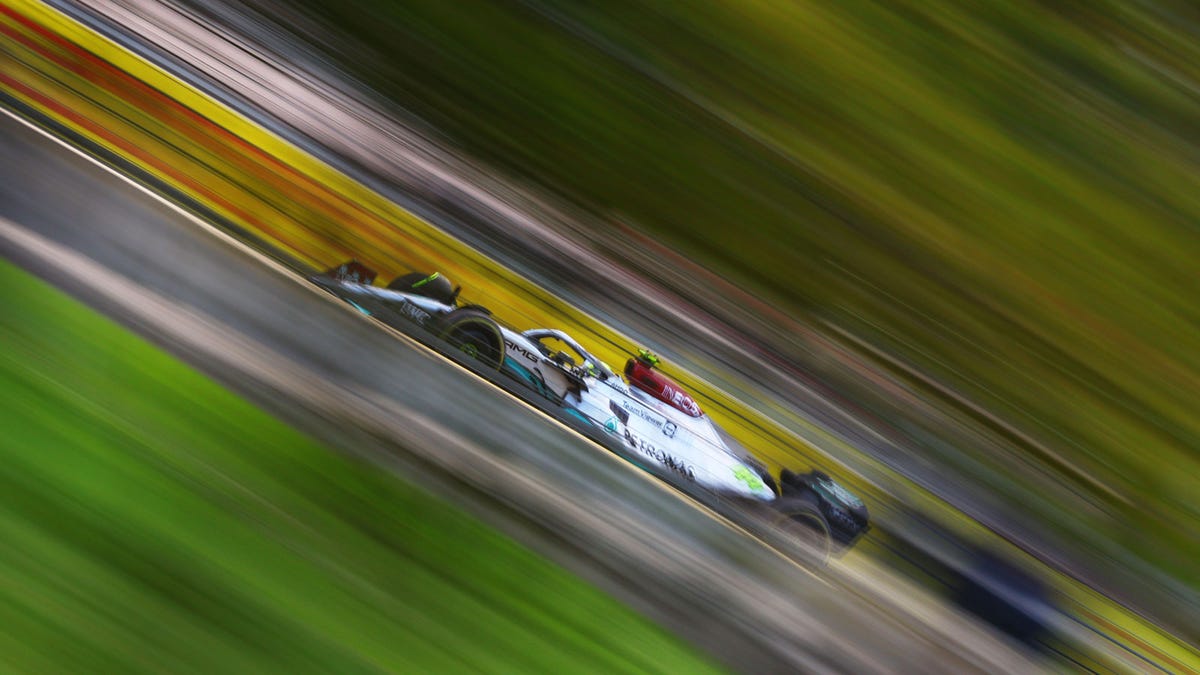Mercedes Admits It Went ‘Too Far’ with Hamilton’s Back-Breaking Baku Setup

51 laps of the Baku street circuit took its toll on Lewis HamiltonPhoto: Mark Thompson (Getty Images)
You might expect that the biggest talking point this Formula 1 season has been the revived fortunes of Ferrari, or the reliability issues that are keeping the fight between Max Emilian Verstappen and Charles Leclerc exciting. But no, the biggest talking point since day one of testing way back in February has been ‘porpoising,’ and some teams are impacted worse than others.
The bouncing phenomenon has been seen in every team up and down the grid at some point so far this season. Each manufacturer appears to be affected by it differently with some, like Ferrari, able to maintain a high speed while bouncing while others, like Mercedes, take a big hit in performance every time the phenomenon occurs.
At the Azerbaijan Grand Prix in Baku, the bouncing of the silver Mercedes cars appeared to have gone up a beat, with the cars of both George Russell and seven-time world champion Lewis Hamilton violently bouncing on the high-speed straights on the city-center circuit.
It got so bad for Hamilton that, mid-way through the race, he got on the radio to his team and warned them that he might be about to crash, according to RaceFans. After the Grand Prix, Hamilton said: “I nearly lost it in the high-speed several times. So that, the battle with the car, was intense.”
Lewis Hamilton (L) and George Russell (R) both complained about porpoising in Baku. Photo: Clive Rose (Getty Images)
Now, in a video debrief following the race, Mercedes chief strategist James Vowles has admitted that the team was too aggressive with its setup for the Baku race. And it’s that set-up that compounded the team’s porpoising problems.
In the video, Vowles said, “On this occasion, though, we pushed the package and our drivers too far. We are putting them into significant discomfort and we simply can’t do that again.
“Our drivers are not the only ones suffering, you’ll see in the media a number of comments from a number of drivers who are equally in discomfort and pain. And we have a responsibility now to make sure that this doesn’t carry on.”
And while it is true that drivers up and down the grid are faced with the issue, Mercedes does seem to be one of the worst affected.
The relentless bouncing left Lewis Hamilton feeling numb. Photo: Dan Mullan (Getty Images)
In fact, during Sunday’s race the bouncing was so relentless for Hamilton that the force it was exerting on his back left him feeling numb and complaining about having a cold seat.
Vowles said: “It just looks, like after the amount of pummeling his back had taken from the bouncing, he fundamentally had a numbness that set in and it looks like the cold was a response to that.
“So there wasn’t anything cold in the car, it was just a response to the amount of endurance and pain he’d been through in the race.”
It was pretty shocking to see Hamilton climb out of the car at the end of the race. Rather than jumping out the cockpit as he usually would, he slowly writhed his way out and perched himself on the halo. Seemingly, a narrow metal bar was more comfortable than his F1 seat.
Despite the discomfort and pain endured by the F1 racer, Mercedes has confirmed that Hamilton will be back in the car at this weekend’s Canadian Grand Prix. There, the team will be hoping that its car is better suited to the layout and that it can get a handle on the porpoising once again.




